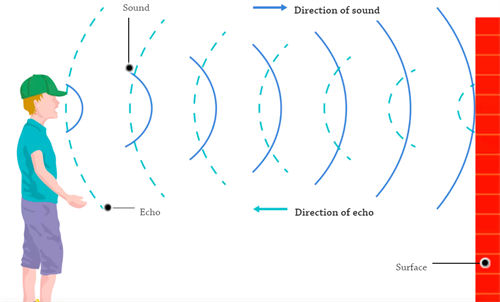PDF chapter test TRY NOW
When we shout or clap near a suitable reflecting surface, such as a tall building or a mountain, we will hear the same sound repeated a short time later. The sound we hear is referred to as an echo.

Echo
The sound sensation lasts about 0.1 seconds in our brain. As a result, the time interval between the original sound and the reflected sound must be at least 0.1 s to hear a distinct echo. Assume that the speed of sound is 340 at 25 ° C. The sound must travel to the obstacle and then reflect back to the listener's ear after 0.1 s. Sound should travel a total distance of at least 340 from its source to the reflecting surface and back.
As a result, in order to hear distinct echoes, the minimum distance between the obstacle and the source of sound must be half of this distance, or 17 m. The temperature of the air will affect this distance.
Because of multiple reflections, echoes may be heard more than once. The sound of thunder is produced by successive reflections of the sound from a variety of reflecting surfaces, including clouds of various heights and the ground.
